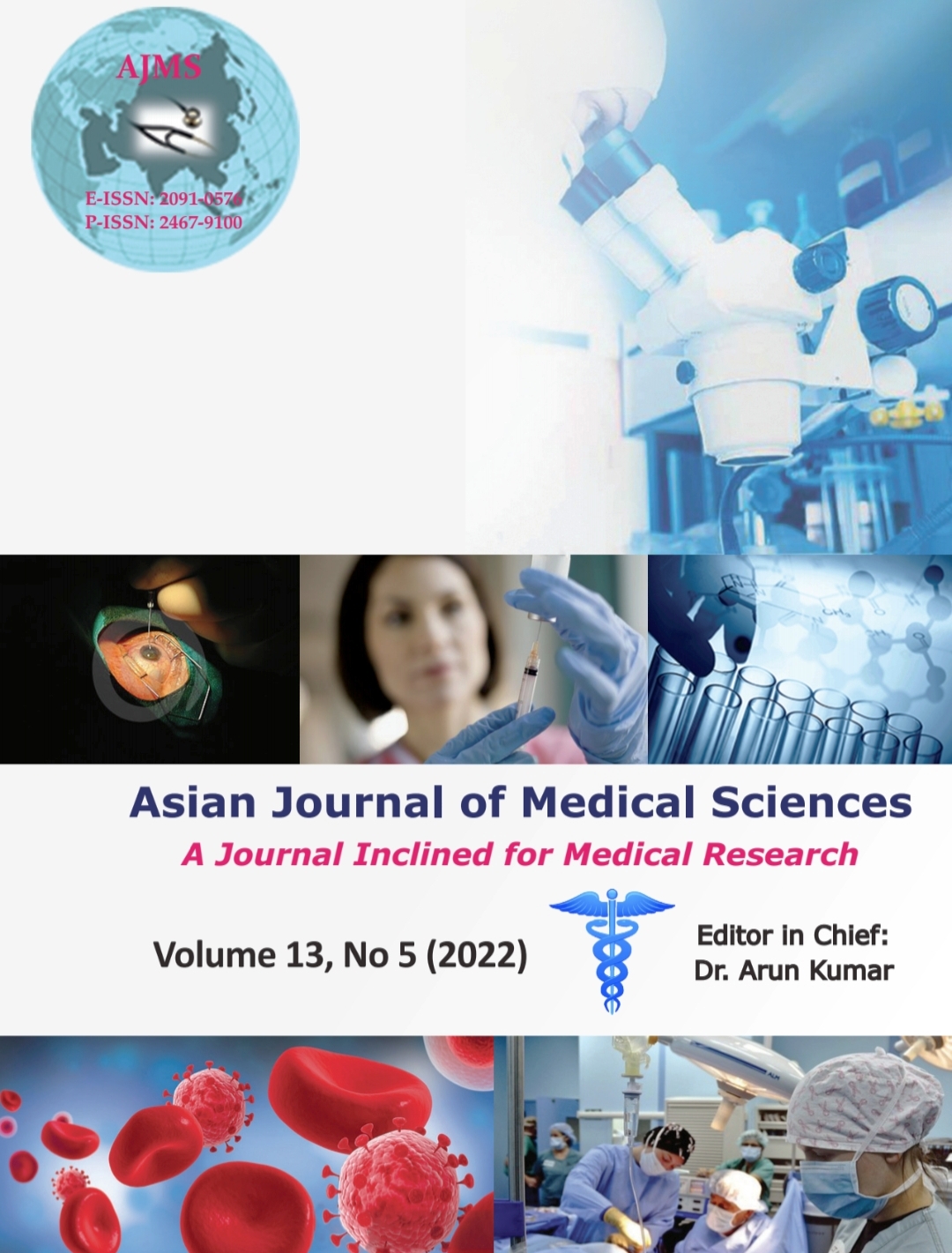Study of APACHE II score and National Institutes of Health Stroke Scale as prognostic indicators in cerebrovascular accidents patients admitted in a tertiary care center, Rewa
Keywords:
Acute Physiology and Chronic Health Evaluation II, Cerebrovascular accident, National Institutes of Health Stroke ScaleAbstract
Background: Stroke is the 2nd largest cause of mortality world over. In the intensive care unit (ICU), severity scales are crucial adjuncts of treatment for anticipating patient outcomes, comparing quality of care, and stratification for clinical studies. They are an important aspect of making better health-care judgments and identifying people with unusual outcomes. This study was conducted to assess and compare Acute Physiology and Chronic Health Evaluation II (APACHE II) score and National Institutes of Health Stroke Scale (NIHSS) score as predictors of mortality in cerebrovascular accident (CVA) patients admitted in medical intensive care unit (ICU) of tertiary care center, Rewa.
Aims and Objectives: To evaluate APACHE II score, NIHSS score and APACHE II + NIHSS score as a predictor of short term mortality in CVA patients.
Materials and Methods: This was a cross-sectional, analytical study conducted in the Department of Medicine, Sanjay Gandhi Memorial Hospital, associated with Shyam Shah Medical College, Rewa (M.P), between January 2020 and June 2021. The APACHE II score, NIHSS score, and APACHE II+NIHSS scores were calculated for each patient on day of admission and patients were followed up for a maximum period of 7 days. The area under receiver operating characteristic (ROC) curve was used to measure the ability of these scoring systems to forecast the prognosis, to find the best dividing value.
Results: Out of 154 patients of CVA, 102 were male and 52 were female. In both sexes, the highest frequency of CVA was seen in those over 55 years of age. The mean age of the participants in the study was 62.70±12.62 years while it was 61.98±12.83 years for males and 64.13±12.19 years for females. The mean APACHE II score in death group was 29.45±10.095, mean NIHSS score in death group was 32.45±6.486, and the mean of both scores combined in death group was 61.91±14.017 and the mean of APACHE II score in survival group was 12.92±6.478, mean NIHSS score in survival group was 14.09±8.099, and the mean of both scores combined in survival group was 27.76±14.090. The APACHE II score had an area under the curve (AUC) of 0.919 which is slightly more than the NIHSS score which had the AUC of 0.913 and the sum of the two scores had the highest area under the ROC curve which is 0.947. According to Youden’s index, the dividing value for the APACHE II score is 21, the NIHSS score is 22, and APACHE II+NIHSS score was 42.
Conclusions: Application of APACHE II and NIHSS scores provides an objective method to decide prognosis and plan management of CVA patients. It also helps in deciding whether the patient needs to manage in neurology ward or ICU depending on the dividing value. Both the scores have good ability to predict the short-term prognosis of CVA patients and the combination of these two can provide an even better measure of mortality.
Downloads
Downloads
Published
How to Cite
Issue
Section
License
Copyright (c) 2022 Asian Journal of Medical Sciences

This work is licensed under a Creative Commons Attribution-NonCommercial 4.0 International License.
Authors who publish with this journal agree to the following terms:
- The journal holds copyright and publishes the work under a Creative Commons CC-BY-NC license that permits use, distribution and reprduction in any medium, provided the original work is properly cited and is not used for commercial purposes. The journal should be recognised as the original publisher of this work.
- Authors are able to enter into separate, additional contractual arrangements for the non-exclusive distribution of the journal's published version of the work (e.g., post it to an institutional repository or publish it in a book), with an acknowledgement of its initial publication in this journal.
- Authors are permitted and encouraged to post their work online (e.g., in institutional repositories or on their website) prior to and during the submission process, as it can lead to productive exchanges, as well as earlier and greater citation of published work (See The Effect of Open Access).




